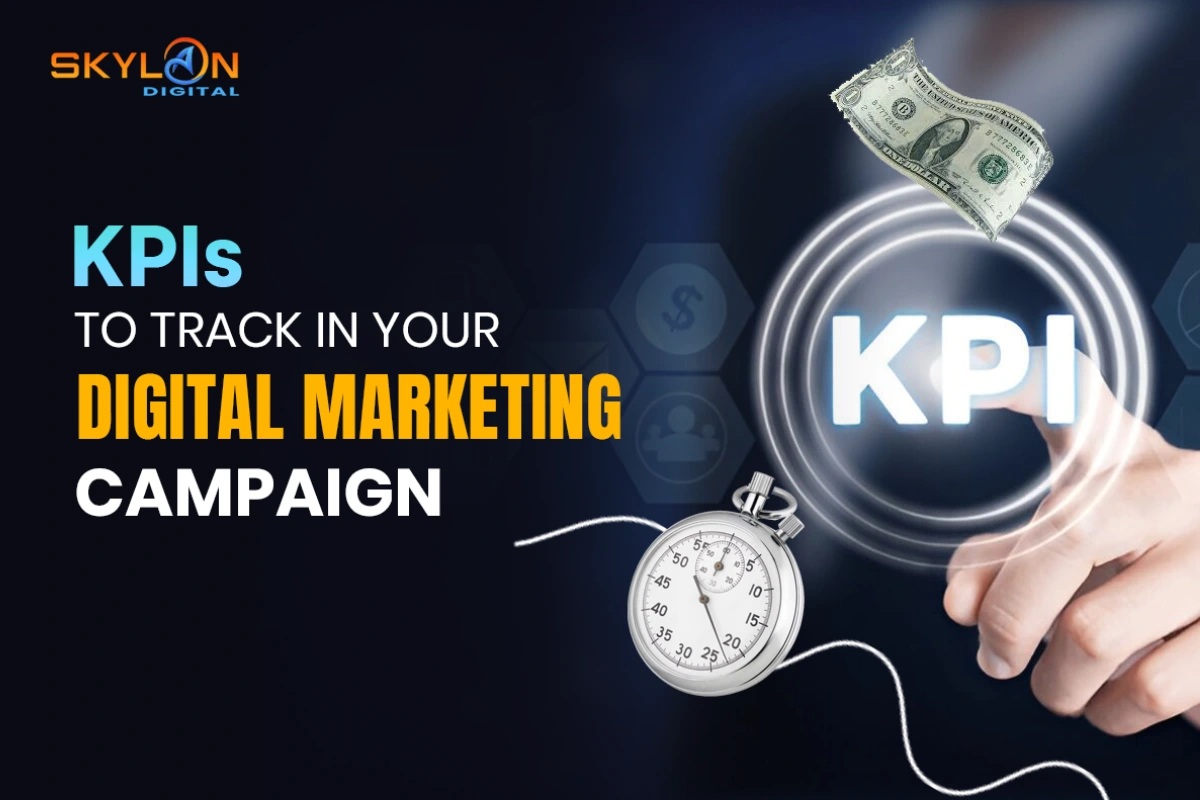
Tracking the right Key Performance Indicators (KPIs) is what makes or breaks your digital marketing campaign. In this article, we’ve compiled the most important KPIs for various marketing channels, whether website traffic or lead generation, customer engagement or ROI, so you know what to measure, which strategies to optimize, and how to hit your marketing targets faster.
Introduction
With the ever changing world of online marketing, it’s increasingly important to be able to interpret or at least measure data. Digital marketing KPIs offer you valuable insight into how effective your marketing strategies are and how to pivot and adapt to meet your desired objectives based on them.
Performance metrics are a must in an SEO, without that tracking it is impossible to figure out what is working and what isn’t. Digital campaign tracking ensures your efforts are the right ones—or at least the smartest guesses—given your goals, and everything is data driven.
In this guide, I’ll show you which essential digital marketing KPIs to monitor to make better, results driven marketing decisions. We will help you build a roadmap for success by deciphering online marketing indicators, specific conversion metrics and everything else in between.
When it comes to measuring digital marketing, things aren’t always clear. Your ultimate aim may be to attract more traffic, multiply your sales conversions, or accomplish any variety of other relevant goals for your business.
Top 10 Digital Marketing KPIs
Website Traffic
What it measures: How many visitors are visiting your site (new and returning).
Why it matters: Without traffic from your target audience, your digital marketing would be pointless. The more traffic you get, the more opportunities there are to engage, get leads, and make conversions. Traffic is coming to your site through high quality, relevant traffic signals (these are the signals that your marketing channels are pulling the right audience to your site).
Tip: Carefully track which traffic sources (organic, direct, referral, social, paid) so you know where your visitors are coming from. Find out which channels are bringing in the most traffic and focus resources where it’s also working well for your business. Fortunately, tools like Google Analytics can help us segment this data much more effectively, so we can make data driven decisions regarding where marketing spend should be allocated.
Conversion Rate
What it measures: The proportion of website visitors who make the desired action, whether or not it’s buying, subscribing to a newsletter, downloading an ebook, or completing a contact form.
Why it matters: Of course, it is also important to drive traffic to your site, but what’s more important is the number of visitors your site nurtures into paying customers and leads. The volume of traffic you drive directly relates to measurable business outcomes — that’s what conversion rate is.
Tip: Look at conversion rates across different landing pages or campaigns and see which strategies are bringing in the most cash. It lets you optimize how each part of your funnel runs and generally maximize your results from marketing. Conversion rate optimization in its most basic sense can be achieved through the use of tools like Google Optimize enabling A/B testing of different page designs, calls to action (CTAs), and offers.
Cost Per Lead (CPL)
What it measures: Cost of generating a lead, the total campaign cost per the number of leads generated.
Why it matters: Without knowing your costs per lead, you can’t fully gauge the success of your paid advertising efforts. The lower the CPL, the more money you spend getting the right audience.
Tip: Target your audience better, put ads with more effective creatives, and optimize your landing page in order to lower CPL. If you are above industry benchmarks on your CPL, increase the relevance of your ad targeting, or improve your offer. Consequently, when you measure CPL alongside your conversion rate, you can determine the cost effectiveness and quality of the leads you generate.
Customer Acquisition Cost (CAC)
What it measures: It is the entire amount spent on marketing and sales to bring on one new paying customer. Advertising, content creation, salaries, and everything else involved in pulling in and converting customers all fall under this umbrella.
Why it matters: CAC gives you insight into how much of your money you’re investing in customer acquisition and if it’s a dollar well spent. It’s important to grasp for understanding your marketing effort’s scalability.
Tip: If your CAC is high, it may mean that your marketing and sales processes aren’t efficient, and if it’s low, you may be without a problem and are efficiently reaching and converting customers cheaply. By comparingC AC with Customer Lifetime Value in the form of CLV you can figure out how profitable your efforts are. If CAC exceeds CLV this is something you need to understand and correct with your marketing so you aren’t wasting your time or money.
Return on Investment (ROI)
What it measures: ROI shows the financial return of your digital marketing campaigns: what return you get for your money spent on it. Tells you how profitable in terms of profit per dollar your campaign was.
Why it matters: Ultimately, the ROI is the metric which measures your profit margin on your digital marketing endeavors. Spending money on strategies that are not working will go unnoticed if you don’t have a tracking ROI.
Tip: You should always make your ROI analysis consistent to the goals of your campaign. But if your goal is brand awareness, choose other measures: reach or engagement. If you’re going to focus on direct sales, ROI is absolutely crucial. Always monitor and optimize your campaigns in order to gain ROI. Track this metric across different touchpoints by harnessing power tools such as Google Analytics, CRM platforms, and attribution models.
Engagement Rate (on Social Media)
What it measures: Different levels of interaction your audience does with your social media content. Everything from likes, comments, shares and more is what counts as engagement.
Why it matters: Engagement rate is a powerful indicator that tells us how your audience connects with your content. If your engagement rate (which you can track in Buffer or our dashboard) is really high, that means people are not only seeing your posts, they’re actually interacting with them. If people are actually clicking on your blog, this is a good sign that you have resonated with your target audience.
Tip: Follower count doesn’t matter as much as engagement rate. You may have lots of followers but they are not really engaging with your content, it’s more important to have an engaged audience that interacts with your content. Instead, concentrate on making top quality information that will spur dialogue, and make sure to provide unique content kinds and production times that cause interaction. It’s also essential to regularly assess which content types (e.g., images, videos, and polls) push the highest engagement and take it for your content strategy.
Email Open Rate is a metric and Email Click Through Rate or CTR
What it measures: The open rate refers to what percentage of recipients open your email, while the click through rate (CTR) tells you what percentage of recipients actually click on a link in your email.
Why it matters: Over the years, email marketing has remained one of the most direct and effective communication channels to talk to your audience. Open rate and CTR tell you what works and how well you’re doing in your emails with regards to time of day, subject line, messaging/content etc.
Tip: They A/B test subject lines, content, and calls to action (CTAs) to improve both open rate and CTR. To enhance these metrics, it’s key to personalize and segment your email list. Also, make sure your email content is optimized for mobile since a good portion of people will open the emails on a phone.
Bounce Rate
What it measures: Bounce rate is calculated as the percentage of visitors who arrive at your site then leave without moving onto other pages within your site.
Why it matters: High bounce rate may indicate poor user experience, bad content or a combination of anything of the above. If it is, then it might imply that visitors aren’t finding what they were looking for on your site, or that you’re not offering enough on your site overall to compel people to continue browsing.
Tip: Increase bounce rate by making improvements to user experience (UX) and relevancy of content. Make sure that your landing pages are simple, clean, and quick to load. To minimize bounce rates with mobile users, try to optimize for mobile. For example, if you’re running ads, your landing page should match what your ad creative sets users’ expectation to be. Then you wouldn’t drop off users who lost interest because they felt misled.
Organic Search Rankings
What it measures: A KPI that tells you how your website ranks in search engine results pages (SERPs) for search terms you should be ranking for.
Why it matters: Organic traffic is better; the higher your rankings the better traffic is to your website. Since these rankings arise from your SEO efforts, monitoring this KPI helps you track the effectiveness of your SEO strategy and get your site ranking higher online.
Tip: Optimize key words, content creation and acquiring back links for the investment in SEO best practices. Build content that has valuable and high quality content that answers your users questions. Being aware of what you’re ranked for as well as understanding your competition will put you ahead of others in your niche and allow you to grow traffic sustainably over the long term.
Customer Retention Rate
What it measures: The number of customers who continue to interact with your brand post their first purchase or interaction.
Why it matters: At the end, existing customers are more profitable than new ones because it expenses less for them to keep each other. If you have a high retention rate, it means that your customers are happy with what you are selling, they stick around, and it’s more plausible they will buy your products over and over again. It’s important as a business is scaling.
Tip: Spend money in building customer loyalty programs, great customer service and impactful remarketing campaign to drive repeat business. In doing so, you can establish a base of retained customers who offer you steady revenue and cut down the snowballing costs of marketing.
Conclusion
Tracking the right digital marketing KPIs gives you a clear roadmap to success. When you focus on performance metrics that truly matter, you optimize your digital campaign tracking with precision.
Actionable takeaway
Identify your top 3-5 KPIs based on your specific business goals and monitor them consistently.
Remember, online marketing indicators and conversion metrics together help ensure every action is tied to meaningful results.
Data-driven marketing isn’t optional anymore—it’s the only way to grow smartly and sustainably.
FAQs
Q1. What is the most important KPI in digital marketing?
Answer: It depends on your goals, but conversion rate and ROI are among the top indicators across industries.
Q2. How often should I review my digital marketing KPIs?
Answer: Ideally, monitor them weekly for active campaigns and monthly for overall strategic analysis.
Q3. Can KPIs differ between B2B and B2C campaigns?
Answer: Yes, B2B often focuses more on lead quality and long-term nurturing, while B2C may prioritize sales volume and engagement.
Q4. How many KPIs should I track at once?
Answer: Focus on 3-7 key KPIs per campaign to avoid overwhelm and maintain clarity.
Q5. What tools can help track digital marketing KPIs effectively?
Answer: Google Analytics, HubSpot, SEMrush, Hootsuite, and native platform analytics (like Facebook Insights, LinkedIn Analytics) are popular choices.






